Are there American-trained doctors in San Miguel de Allende?
Lane Simmons - RE/MAX Colonial San Miguel de Allende
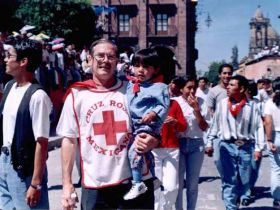 My brief answer to are there American-trained doctors in San Miguel de Allende, is “yes.”
My brief answer to are there American-trained doctors in San Miguel de Allende, is “yes.” Obviously the medical care situation can be a literally critical issue for anyone here even temporarily, and this is something I have had some experience with personally and as a volunteer first-responder with the local Red Cross. Many years ago I helped establish a project, called the Pan American Emergency Medicine Development program, that brings US...
 My brief answer to are there American-trained doctors in San Miguel de Allende, is “yes.”
My brief answer to are there American-trained doctors in San Miguel de Allende, is “yes.” Obviously the medical care situation can be a literally critical issue for anyone here even temporarily, and this is something I have had some experience with personally and as a volunteer first-responder with the local Red Cross. Many years ago I helped establish a project, called the Pan American Emergency Medicine Development program, that brings US emergency physicians here to assist and instruct in area hospitals, while learning Spanish applicable to their particular emergency medicine environments.
San Miguel offers an impressive variety of traditional as well as alternative medical clinics and doctors representing practically all areas of specialization, including some treatments unavailable in the US. Both the quality of the health care and the number of medical professionals in San Miguel de Allende far exceed what is normally available elsewhere except in much larger cities, and some of Mexico’s finest doctors and hospitals are located in the nearby cities of Querétaro and Celaya.
(Querétaro located about 45 minutes from San Miguel de Allende, is one of the fastest growing cities in the Americas, and has exceptionally good hospitals and medical infrastructure. As a matter of fact, they are opening a huge new facility there, which is going to be like a medical city.)
When we had been living in Mexico for about half a year, we moved to the state of Michoacán, where we rented a cabin and were collecting firewood for the fireplaces when Becky, my wife, who was 40 years old at the time, slipped and fell as she was carrying firewood up a pine needle covered hill.
Two weeks later, (I believe women are generally tougher than men are) she was still insisting that she would be okay, but she wasn’t. She said, “You’re not taking me to a Mexican doctor. I am not going to have doctor cutting on me who I can’t communicate with. Just get me back to the United States.” At that point she spoke very little Spanish and was extremely uncomfortable about seeing a doctor in Mexico, but by then she couldn’t walk and her pains were horrible, so I knew I had to get her to a doctor here whether she liked it or not, and it turned out that she had slipped a disc that was obstructing 90% of her spinal cord.
We learned of an orthopedic surgeon in Querétaro, who was the son of a friend of ours who owned a restaurant here that we ate in constantly. Friends of mine from the local Red Cross helped us with an ambulance to get there.
When we sat in the office of Dr. Fidel Dobarganes , he looked at us and the first thing he said was, “Spanish, English, French, or German?” We looked at his wall and we saw his diplomas, including one from Tulane University. This guy had studied all over the world. He had an orthopedic surgeon resume that would choke a horse! So instantly, we became comfortable.
This was one of the things that got me by the heartstrings because we moved down here at an in-between time in my life where I wanted to try something different. I said, “I’m going to try my hand as a writer.” So at that point, at the age of 42, I did not have health insurance, and I didn’t have a lot of money to pay large medical bills. Dr. Dobarganes slapped the MRI results up on the screen and looked at it. Then he immediately grabbed the phone on his desk, and with the little Spanish that I knew back then, I could understand that he was requesting the next available operating room. I said, “Woah, woah, woah! Wait a minute. What’s this going to cost?”
He pointed to the MRI and said, “That’s your wife. That’s her back. You need to start accepting right now that she might not walk again. You have waited too long for this. This cannot be put off.”
“But what’s it going to cost?”
“Look. I am going to talk to the anesthesiologist and the neurosurgeon, (because of the spinal cord involvement, we needed a neurosurgeon) and we’re going to do this at 9 AM tomorrow. We’ll talk about the money afterwards. This has to be done.”
After the surgery the following morning, they brought Becky to her hospital room and the doctor came to check on her. I said, “Doctor, we need to talk about the financial arrangements here.” (I had been told that in the USA this surgery would have cost at least US $30,000.)
“No, you need to be with your wife right now. Focus on her healing and we’ll talk about this later.”
I thought, “Oh no. I am being set up for God knows what the bill would be. But like he said, that’s my wife, and I am doing whatever it takes to get this done.”
On the day they were releasing Becky from the hospital, Dr. Dobarganes walked up to me and said, “Here’s the deal. I worked this out with the neurosurgeon and the anesthesiologist. As you know, my mother owns a restaurant in San Miguel. I want you to go there on the first of every month for the next 10 months, and give her US $500.”
I don’t imagine the financial aspect of this would have so easily been worked out in the States. But here, for US $5,000 financed for 10 months with no carrying charge, my wife had what would have been at least a US $30,000 surgery, which says a lot about medical costs in Mexico, and well exemplifies the “heart factor” of the people here. The surgery was successful, and her back’s been fine since then.
I think it’s also worth mentioning that the quality of medical services available in Mexico for a fraction of the cost in the U.S.A. is now such that it is causing considerable growth in “medical tourism” here.
(Pictured: Lane Simmons in Red Cross shirt with son Pancho.)
Posted May 2, 2016
Melanie Lansing - Mexico Insurance Advisors
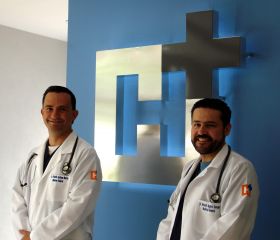 Yes, there are American-trained doctors here in San Miguel de Allende. I know a few who have received their specialty degrees and/or specialty courses in the US or Europe. There are also American naturopaths who are practicing here without a medical license in Mexico. They are popular among the English-speaking expats who prefer homeopathic medicine. We also have two Mexican doctors who have duo degrees in general medicine & homeopathy. They offer cutting edge alternative...
Yes, there are American-trained doctors here in San Miguel de Allende. I know a few who have received their specialty degrees and/or specialty courses in the US or Europe. There are also American naturopaths who are practicing here without a medical license in Mexico. They are popular among the English-speaking expats who prefer homeopathic medicine. We also have two Mexican doctors who have duo degrees in general medicine & homeopathy. They offer cutting edge alternative... Yes, there are American-trained doctors here in San Miguel de Allende. I know a few who have received their specialty degrees and/or specialty courses in the US or Europe. There are also American naturopaths who are practicing here without a medical license in Mexico. They are popular among the English-speaking expats who prefer homeopathic medicine. We also have two Mexican doctors who have duo degrees in general medicine & homeopathy. They offer cutting edge alternative medicine such as stem cell & anti-aging therapies.
Yes, there are American-trained doctors here in San Miguel de Allende. I know a few who have received their specialty degrees and/or specialty courses in the US or Europe. There are also American naturopaths who are practicing here without a medical license in Mexico. They are popular among the English-speaking expats who prefer homeopathic medicine. We also have two Mexican doctors who have duo degrees in general medicine & homeopathy. They offer cutting edge alternative medicine such as stem cell & anti-aging therapies. (H+ doctors, San Miguel de Allende, Mexico, pictured.)
Posted May 14, 2016
Daniel Ortiz - Coldwell Banker SMART
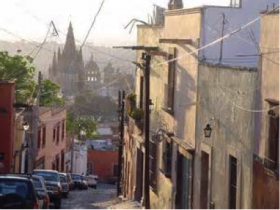 Yes, there are American-trained doctors in San Miguel de Allende, some of whom I know personally. Some are specialists and some are general practitioners.
Yes, there are American-trained doctors in San Miguel de Allende, some of whom I know personally. Some are specialists and some are general practitioners. Some of the physicians here in San Miguel de Allende are quite popular among the expats. One example is Dr. Roberto Maxwell, whose specialty is internal medicine and critical care but he also practices cardiopulmonary medicine. Dr. Maxwell was trained in the US in San Diego, California and is...
 Yes, there are American-trained doctors in San Miguel de Allende, some of whom I know personally. Some are specialists and some are general practitioners.
Yes, there are American-trained doctors in San Miguel de Allende, some of whom I know personally. Some are specialists and some are general practitioners. Some of the physicians here in San Miguel de Allende are quite popular among the expats. One example is Dr. Roberto Maxwell, whose specialty is internal medicine and critical care but he also practices cardiopulmonary medicine. Dr. Maxwell was trained in the US in San Diego, California and is affiliated several American boards.
There are several doctors here in San Miguel who have great reviews and overall feedback from their patients here. People are just comfortable working with them and being treated by them, especially those in the expat community.
(Narrow street in San Miguel de Allende, Mexico, pictured.)
Posted May 21, 2016
Eric Chazaro - Keller Williams Allende
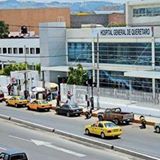 The doctors in San Miguel de Allende were not trained in San Miguel de Allende because there are no med schools here. Most of the doctors that you would find in San Miguel have either trained in Mexico City, Guadalajara, or even in the US. Most of them are bilingual. You could find specialists such as cardio-pulmonologists, internists, and gastroenterologists in San Miguel that have been trained all over the world so they are just as good as any other doctor in Mexico City or any...
The doctors in San Miguel de Allende were not trained in San Miguel de Allende because there are no med schools here. Most of the doctors that you would find in San Miguel have either trained in Mexico City, Guadalajara, or even in the US. Most of them are bilingual. You could find specialists such as cardio-pulmonologists, internists, and gastroenterologists in San Miguel that have been trained all over the world so they are just as good as any other doctor in Mexico City or any... The doctors in San Miguel de Allende were not trained in San Miguel de Allende because there are no med schools here. Most of the doctors that you would find in San Miguel have either trained in Mexico City, Guadalajara, or even in the US. Most of them are bilingual. You could find specialists such as cardio-pulmonologists, internists, and gastroenterologists in San Miguel that have been trained all over the world so they are just as good as any other doctor in Mexico City or any other doctor that you would find anywhere else in the world. Some of the ones that I go to for consultation have even trained in Europe.
The doctors in San Miguel de Allende were not trained in San Miguel de Allende because there are no med schools here. Most of the doctors that you would find in San Miguel have either trained in Mexico City, Guadalajara, or even in the US. Most of them are bilingual. You could find specialists such as cardio-pulmonologists, internists, and gastroenterologists in San Miguel that have been trained all over the world so they are just as good as any other doctor in Mexico City or any other doctor that you would find anywhere else in the world. Some of the ones that I go to for consultation have even trained in Europe. If you want to get a specialized treatment or if you need to have a complicated surgery done and if it is something that you can plan rather than have it be an emergency, I would recommend that you look into options in the city of Queretaro, which is a city of over a million people and just 45 minutes away by car from San Miguel de Allende. Queretaro has some of the best hospitals in the country of Mexico. You could have aesthetical surgeries, hip replacements, cancer treatment, or any other type of specialized treatment in Queretaro.
(Hospital General de Queretaro, Queretaro, Mexico, pictured.)
Posted June 6, 2016
Ian T. Clement - Clement and Associates
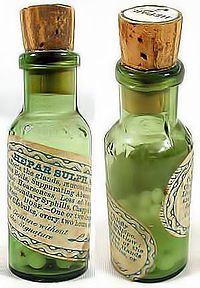 Most of the traditional doctors that I know in San Miguel de Allende are bicultural doctors. There’s a cardiologist in town that I think is half American. We worked with a couple who aren’t homeopaths but are called naturopaths. They have treated my parents and my family, too. I’m not a big advocate of traditional Western medicine. We try to do a little bit of pulling from all kinds- traditional Mexican medicine and Asian medicine. If I can have tea or do something...
Most of the traditional doctors that I know in San Miguel de Allende are bicultural doctors. There’s a cardiologist in town that I think is half American. We worked with a couple who aren’t homeopaths but are called naturopaths. They have treated my parents and my family, too. I’m not a big advocate of traditional Western medicine. We try to do a little bit of pulling from all kinds- traditional Mexican medicine and Asian medicine. If I can have tea or do something... Most of the traditional doctors that I know in San Miguel de Allende are bicultural doctors. There’s a cardiologist in town that I think is half American. We worked with a couple who aren’t homeopaths but are called naturopaths. They have treated my parents and my family, too. I’m not a big advocate of traditional Western medicine. We try to do a little bit of pulling from all kinds- traditional Mexican medicine and Asian medicine. If I can have tea or do something natural to treat an illness, I’ll avoid taking over-the-counter drugs. I never get sick, so it works.
Most of the traditional doctors that I know in San Miguel de Allende are bicultural doctors. There’s a cardiologist in town that I think is half American. We worked with a couple who aren’t homeopaths but are called naturopaths. They have treated my parents and my family, too. I’m not a big advocate of traditional Western medicine. We try to do a little bit of pulling from all kinds- traditional Mexican medicine and Asian medicine. If I can have tea or do something natural to treat an illness, I’ll avoid taking over-the-counter drugs. I never get sick, so it works. All residents and citizens of Mexico are entitled to Seguro Popular, which is basic immediate emergency care. If you fall down and need stitches, they will treat you there. If I were to have a minor accident, I would go there and get stitched up, and then go home. If I were in a more serious accident, I would probably go to the city of Querétaro, which is 45 minutes to an hour away, where there’s a good hospital called H+. I’ve had surgery there, as have other members of my family, so I feel completely confident in the infrastructure and personnel of that hospital.
In the last 10 years, things have gotten so much more sophisticated in this region of Mexico, and it’s a nice thing to know that we’ve got maybe not world-class hospitals, but ones that could certainly compete with plenty others in the First World.
I’m going to sign up my family and my employees for IMSS, which is the more comprehensive healthcare system in Mexico. IMSS is the federal healthcare system that also falls under public pensions. Signing everyone up for IMSS is one of the steps that my office is taking to get more formalized. Since we have a bigger staff now, it’s our responsibility to have everybody covered. It would certainly be horrible to think that somebody under my employment got hurt but didn’t have insurance coverage.
Not everyone is covered by IMSS. IMSS is something that you pay for. Seguro Popular covers all citizens of Mexico, including people who are here on a permanent and temporary VISA. Only people who are here as illegal aliens, or as tourists, don’t enjoy that entitlement.
(Homeopathic preparation, pictured.)
Posted November 23, 2016
Jonathan Peters - Ventanas de San Miguel
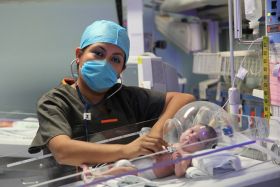 There are American trained doctors in San Miguel de Allende. I have two daughters who were both born here and my wife's OB-GYN had a recognition plaque on the wall that he had been trained in an American university. It's not uncommon to have US trained doctors in San Miguel de Allende at least during their fellowship or residency.
There are American trained doctors in San Miguel de Allende. I have two daughters who were both born here and my wife's OB-GYN had a recognition plaque on the wall that he had been trained in an American university. It's not uncommon to have US trained doctors in San Miguel de Allende at least during their fellowship or residency. The healthcare during my wife’s childbirth was remarkably impressive. I have family members who are medical...
 There are American trained doctors in San Miguel de Allende. I have two daughters who were both born here and my wife's OB-GYN had a recognition plaque on the wall that he had been trained in an American university. It's not uncommon to have US trained doctors in San Miguel de Allende at least during their fellowship or residency.
There are American trained doctors in San Miguel de Allende. I have two daughters who were both born here and my wife's OB-GYN had a recognition plaque on the wall that he had been trained in an American university. It's not uncommon to have US trained doctors in San Miguel de Allende at least during their fellowship or residency. The healthcare during my wife’s childbirth was remarkably impressive. I have family members who are medical malpractice defense attorneys who were here for both of my daughters' births. They were inside in the O.R. together with the anesthesiologist, the OBGYN, the doctor running the show, the pediatrician, and two nurses, which is US $2,000 for a C-section in San Miguel de Allende. We received three days of really good hospital care afterwards. The hospital bill would have been $30-40,000 in the States. The level of care was professional but with extra level of attention and warmth to the whole process that would have been the envy of a lot of people in the States. We were fortunate not to need a lot of healthcare. However the healthcare provided by the pediatricians is extensive and we've been very happy.
It wasn't important to me whether the physician was trained in the US or not. I have faith in the Mexican healthcare system. I'm not wealthy, just like a lot of people living in Mexico, and the medical care tends to rise to the economic level of the patient. There are a lot of capable doctors in Mexico that inspired a lot of confidence in me to stay here for the healthcare and not to need to fly to Austin, Houston or Dallas.
San Miguel de Allende's medical care options are expanding big time but if there are any medical care options that are missing, Queretaro (one of the closest bigger cities with over a million people) is 40 minutes away by car. In Queretaro there are a lot of doctors with medical education from the US or from countries that have an outstanding level when it comes to medical education.
You can basically get the healthcare you need covered in San Miguel de Allende, but if you couldn't, we're more than half an hour away from some world class hospitals with healthcare that’s comparable to you get in the States. Queretaro has one of the largest shopping malls south of the US border, which is half an hour away from San Miguel de Allende and has every store that you could ever imagine. The same applies to healthcare since Queretaro’s been booming so much that with upper class people, private healthcare is really top notch.
People who aren't doing well financially can participate in Mexico’s socialized healthcare and still get great level of TLC or customer service.
(New born at Hospital General Bicentenaro, Mexico, pictured.)
Posted December 26, 2016
Greg Gunter - Dream Pro Homes
 Yes Readers, I personally know and visit several American-trained doctors here in San Miguel de Allende and indeed throughout Mexico, and increasingly more of them are women.
Yes Readers, I personally know and visit several American-trained doctors here in San Miguel de Allende and indeed throughout Mexico, and increasingly more of them are women. Many physicians might attend UNAM in Mexico for their general medical degree, then receive their specialist degree and / or complete their residency and internship in the U.S. These are doctors that you know are dedicated to their profession because they could stay in the U.S....
 Yes Readers, I personally know and visit several American-trained doctors here in San Miguel de Allende and indeed throughout Mexico, and increasingly more of them are women.
Yes Readers, I personally know and visit several American-trained doctors here in San Miguel de Allende and indeed throughout Mexico, and increasingly more of them are women. Many physicians might attend UNAM in Mexico for their general medical degree, then receive their specialist degree and / or complete their residency and internship in the U.S. These are doctors that you know are dedicated to their profession because they could stay in the U.S. and earn up to ten times what physicians earn here in Mexico, where a typical doctor’s visit runs 600 to 900 pesos (roughly $32 to $48 USD) for a full hour’s visit.
Posted April 15, 2017
SONIA DIAZ - Sonia Diaz
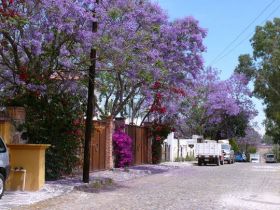 Yes, there are some American-trained doctors in San Miguel de Allende. Many of them are retired and in many cases, choose not to practice due to the long credentialing process. There are a few American doctors who practice though, some of whom speak not only English and Spanish, but a few other languages, as well. One of them is Dr. Robert Maxwell.
Yes, there are some American-trained doctors in San Miguel de Allende. Many of them are retired and in many cases, choose not to practice due to the long credentialing process. There are a few American doctors who practice though, some of whom speak not only English and Spanish, but a few other languages, as well. One of them is Dr. Robert Maxwell.Dr. Maxwell is both American and Mexican. He can communicate well with English-speaking people, like Americans and Canadians.
A very...
 Yes, there are some American-trained doctors in San Miguel de Allende. Many of them are retired and in many cases, choose not to practice due to the long credentialing process. There are a few American doctors who practice though, some of whom speak not only English and Spanish, but a few other languages, as well. One of them is Dr. Robert Maxwell.
Yes, there are some American-trained doctors in San Miguel de Allende. Many of them are retired and in many cases, choose not to practice due to the long credentialing process. There are a few American doctors who practice though, some of whom speak not only English and Spanish, but a few other languages, as well. One of them is Dr. Robert Maxwell.Dr. Maxwell is both American and Mexican. He can communicate well with English-speaking people, like Americans and Canadians.
A very well-known doctor is Dra. Meslie Marie Flores. She was born in the U.S. and is Mexican. She speaks English, Spanish and French. Her patients in San Miguel, of which there are many see her totally through her coming to her patients’ home. These doctors have a fee of about 800 pesos. However, many walk-in clinics are 40 pesos per visit.
You do not have to be concerned that the training and standards in San Miguel de Allende are not up to that in the US and Canada. There are several here that meet this criterion. In addition, the much larger city of Queretaro, which is 45 minutes away, has large, excellent hospitals and doctors, as well.
(Pictured: Jacaranda in bloom on street in San Miguel de Allende.)
Posted February 28, 2018


